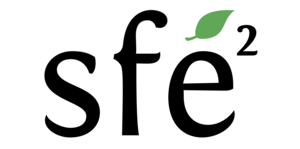Fully funded PhD: Sublethal effects of sulfonylurea herbicides on a widespread amphibian (Bufo spinosus)
Supervised by:
François Brischoux, Centre d’Etudes Biologiques de Chizé – CEBC, CNRS-La Rochelle Université (www.cebc.cnrs.fr; @Ecophy_CEBC)
Co-supervised by:
Nicolas Pollet, Evolution, Génome, Comportement et Ecologie – EGCE, CNRS-Université Paris Saclay (www.egce.universite-paris-saclay.fr; @NNpollet)
David Costantini, Department of Ecological and Biological Sciences, University of Tuscia (@DavidZool)
Context
Modern agricultural practices have intensified in recent years despite international concerns about potential consequences to biodiversity. Intensive agriculture can affect biodiversity through the widespread use of agrochemicals, notably through subtle sublethal effects. Although designed to be toxic for specific taxa, pesticides can also affect non-target species. The impact of agrochemicals on non-target species can influence wildlife through acute and chronic exposures. Environmental concentrations are often very low compared to the values tested under laboratory conditions on model species, which define standards of use. As a consequence, although these low environmental concentrations are usually disregarded by regulatory toxicity studies, an increasing body of literature has highlighted their effects through several mechanisms affecting DNA structure, oxidative status, physiology, development, morphology or behaviour, all of which can ultimately influence individual survival and reproduction and thus population persistence.
Among the agrochemicals widely used in conventional agriculture, herbicides are the most commonly applied to crops. However, studies of the unintended effects of herbicides on non-target species (animals) are disproportionately weaker than for other pesticides (insecticides, fungicides). This discrepancy is probably linked to herbicide modes of action targeting specific plant functions. Nevertheless, numerous recent studies show that herbicides induce sublethal effects that alter the physiology, behaviour, reproduction and survival of non-target organisms, particularly wild vertebrates (birds, amphibians, reptiles, and mammals).
Sulfonylurea herbicides were developed to replace toxic molecules. They are now widely used in all crop weed control programs worldwide and include over 50 different products. Sulfonylurea herbicides have been highly successful because of their efficiency on a vast spectrum of plants and their apparent low toxicity to humans and mammals. Nevertheless, the specific chemical structure of sulfonylurea herbicides makes them potentially powerful endocrine disruptors.
PhD
In this context, the PhD project aims to study the unintended effects of sulfonylurea herbicides on wildlife, using a widespread temperate amphibian (Bufo spinosus, spined toad) as the study model and using sulfonylurea herbicides that are widely used and quantified in non-target environments (surface waters), based on environmental monitoring.
The candidate will investigate the unintended effects of sulfonylurea herbicides on Spined toads, including morphological, behavioural and physiological (hormones [thyroid hormones, CORT], telomeres, oxidative status) alterations and indirect impact through altered microbiome (metatranscriptomics). The candidate will determine and quantify these effects during two crucial phases in the life cycle of these species, namely embryonic and larval development and during adult life.
Location
The candidate will be primarily based at the Centre d’Etudes Biologiques de Chizé (CEBC, www.cebc.cnrs.fr) to carry out the field and experimental work. Lab work will be performed at the CEBC, EGCE (N. Pollet, microbiome analyses) and University of Tuscia (D. Costantini, oxidative status).
Profile and skills required
Student with a Master’s degree in ecophysiology or ecotoxicology are expected. The PhD includes field and experimental work, and joint experience in both fields is welcome. A good practice of R for statistical analyses and motivation for programming are required.
Level of required English: High Intermediate: You can use the language effectively and express yourself precisely.
Application
Please send a detailed CV, a motivation letter and the contacts of two to three references to F. Brischoux, N. Pollet and D. Costantini (francois.brischoux@cebc.cnrs.fr, nicolas.pollet@universite-paris-saclay.fr, david.costantini@unitus.it).
Applications will be reviewed on a rolling basis, but should not be received later than May 15th.

Commentaires récents